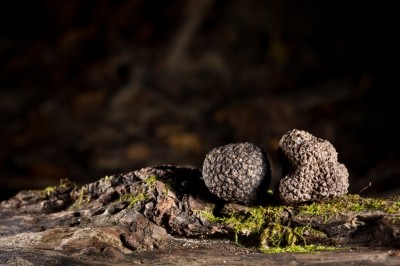Novel food vehicle suspected in Salmonella outbreak

During July - September 2015, 159 patrons reported gastrointestinal illness after eating at a Fig and Olive restaurant in the District of Columbia.
Forty-one people (40 restaurant patrons and one employee) were infected with an indistinguishable S. Enteritidis strain on the basis of pulsed-field gel electrophoresis (PFGE).
The PFGE pattern associated with the outbreak is the eighth most common in the PulseNet database.
Truffle oil likely source
A case-control study using restaurant patron data identified truffle oil as the likely source of infection.
Six food items were significantly associated with case status, three of which (beef carpaccio, truffle mushroom croquette and truffle risotto) contained truffle oil.
Approximately 89% of case-patients reported eating truffle oil-containing items, compared with 57% of patrons who did not report gastrointestinal illness.
Control subjects ate at the restaurant during July 1-September 10, 2015 but did not report gastrointestinal illness.
Although several violations were noted during the restaurant inspections, the environmental, laboratory and traceback investigations did not confirm the contamination source.
Results from the routine inspection after the initial complaint did not warrant restaurant closure; however, increasing concern about a potential outbreak, based on multiple complaints of illness, prompted suspension of the restaurant’s license.
The researchers said this public health response likely prevented additional illnesses, because 9% of case-patients reported eating at the restaurant the day before the closure.
After reopening in September 2015, the restaurant was required to undergo periodic inspections.
Salmonella source not determined
Truffle fries screened positive for Salmonella by using polymerase chain reaction (PCR) but the pathogen was not isolated during confirmatory testing.
The Los Angeles County Department of Public Health told the District of Columbia Department of Health (DCDOH) of a possible outbreak associated with the same chain at a Los Angeles restaurant.
In October, the Food and Drug Administration and the New York State Department of Agriculture and Markets inspected the New York-based commissary that prepared and distributed food to both restaurants.
Truffle oil was regularly shipped to all the chain of restaurants across the US including those with no reported illnesses.
Analysis of 102 subsamples of environmental sponges from food preparation areas using bioMérieux’s VIDAS Enzyme Linked Fluorescent Assay did not detect Salmonella species.
The strain identified was also associated with Turkish pine nuts in a 2011 multistate outbreak.
Whole genome sequencing by CDC identified significant differences between the S. Enteritidis strain and the one implicated in the 2011 pine nut outbreak.
Source: MMWR Morb Mortal Wkly Rep 2017; 66:278–281
“Investigation of Salmonella Enteritidis Outbreak Associated with Truffle Oil - District of Columbia, 2015”
Authors: S. Janet Kuramoto-Crawford; Sasha McGee; Keith Li; Andrew K. Hennenfent; Kossia Dassie; Jhetari T. Carney; Arian Gibson; Ivory Cooper; Morris Blaylock; Reginald Blackwell; Angela Fields; John Davies-Cole






















